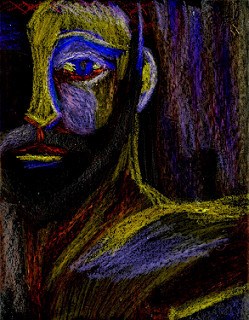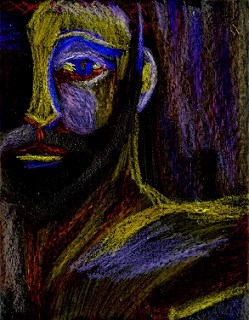A lot of people these days, especially on the secular West Coast, know very little about the traditions and disciplines of the Christian community. Lent, for them, is a strange custom of sad self-sacrifice that follows the unrestrained partying of Mardi Gras.
In any religious tradition as old and as diverse as Christianity, there are going to be lots of ways of making sense of Lent. This is mine. It uses concepts and considerations that are particular to the Christian tradition. If you do not identify with that perspective, I hope you can find parallels in your take on transcendence and transformation.
The major seasons of the Christian year – Advent, Christmas, Epiphany, Pentecost, Lent, and Easter – help the community remember the story of Jesus and how the Creator was reconciling the world into right relationships through him. That’s a very contested way of understanding life on this planet these days, but it’s the essence of the Christian tradition.
Within the flow of that story, Lent comes immediately after the baptism of Jesus. Baptism is God’s call to mission, to be and do what God created you for. Perhaps the prophet Micah gives us the best concise formulation of that mission – do justice, love kindness, and walk humbly with God (Micah 6:8). In Jesus’ case, he was to announce and inaugurate, in words and deeds, the final phase of God’s commonwealth of forgiveness and flourishing.
 That was not an easy mission. To remain loyal to that calling, pressing temptations would have to be resisted. Jesus was driven into the wilderness to agonize over the temptations to replace God’s desire for justice, kindness, and humility as the focus of his loyalty with possessions, prestige, and power. It wasn’t a short struggle - 40 days and 40 nights. Jesus had lived under Roman imperialism for 30 years already. His early years were spent as a refugee in Egypt. He had lived the devastation Roman exploitation and domination had imposed on the villages of Galilee, with all their empty promises of peace and prosperity. These were dark days for his people. And the temptations to simply give in and collaborate with the Romans were appealing. To resist, especially in non-violent ways, could (and would) mean execution as a traitor.
That was not an easy mission. To remain loyal to that calling, pressing temptations would have to be resisted. Jesus was driven into the wilderness to agonize over the temptations to replace God’s desire for justice, kindness, and humility as the focus of his loyalty with possessions, prestige, and power. It wasn’t a short struggle - 40 days and 40 nights. Jesus had lived under Roman imperialism for 30 years already. His early years were spent as a refugee in Egypt. He had lived the devastation Roman exploitation and domination had imposed on the villages of Galilee, with all their empty promises of peace and prosperity. These were dark days for his people. And the temptations to simply give in and collaborate with the Romans were appealing. To resist, especially in non-violent ways, could (and would) mean execution as a traitor.
So, for me, Lent is about resisting the temptation to rebel against God’s mission to do justice, love kindness, and walk humbly with the Creator. The temptations to walk an easier path in life are incessant, especially in a secular culture shaped so powerfully by individualism, materialism, and consumerism. The alternative way of being human and living a flourishing life that we find in Jesus and his friends is what makes sense of Lent for me. It is a way of life that sees human life as fundamentally communal, that appreciates the transcendent dimensions of life in its fullness, and that cultivates wise stewardship of all the resources entrusted to us in our planetary home. Â
There are lots of other readings of Lent, many focused on humans being dust, symbolized by ashes. I’m not convinced this is the only or even the best sense to make of Lent. It too easily dismisses the worth and dignity of human beings as created by God, as taken on by God in the birth and death of Jesus, and as elevated into the divine dance of delight in the resurrection and ascension of Christ.
In those 40 days, Jesus solidified his core loyalty to the costly mission of redeeming the world. As his Jewish tradition taught him, especially through Psalm 103, that encompassed his own person, plus the community called to bless the creation, plus the whole of creation. Seeing the Christian mission as anything less is a reductionist distortion of what God desires. Lent, for me in my community, is a time to remember that and recommit to God’s delight in justice, kindness, and humility.
John Stuart uses crayons to capture a feel for the depths of the Christian tradition. The image accompanying this column conveys to me a determined delight in the midst of darkness. There’s no denying the darkness that exists in the world – mass killings, multi-generational traumas, bitter divides, millions in exile. But there is light in this image. From above, on the brow and the shoulders. From within, in the eyes. That is the light of God’s love and it cannot be extinguished. Living in that light is the sense that lies at the heart of Lent.
*The image of Jesus was done by John Stuart and is used with permission. More of his work can be found at .  Â
 Brian Fraser is lead provocateur of Jazzthink and minister with Brentwood Presbyterian Church in Burnaby, BC. He works primarily with not-for-profit staffs and boards convening COOL conversations for SMARTer leadership. You can find out more at ²¹²Ô»åÌý.
Brian Fraser is lead provocateur of Jazzthink and minister with Brentwood Presbyterian Church in Burnaby, BC. He works primarily with not-for-profit staffs and boards convening COOL conversations for SMARTer leadership. You can find out more at ²¹²Ô»åÌý.
You can read more articles from our interfaith blog. The Spiritual View,


